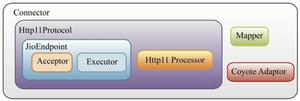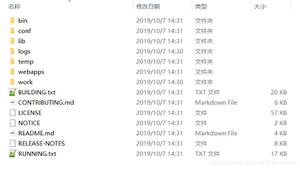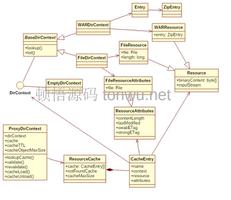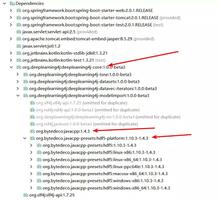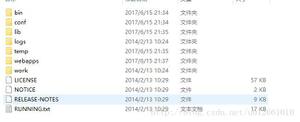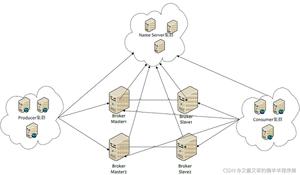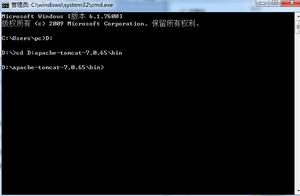如何防止tomcat会话劫持?
在我的web.xml中,我为一些资源定义了一个用户数据约束:
<security-constraint> <web-resource-collection>
<web-resource-name>Personal Area</web-resource-name>
<url-pattern>/personal/*</url-pattern>
</web-resource-collection>
<web-resource-collection>
<web-resource-name>User Area</web-resource-name>
<url-pattern>/user/*</url-pattern>
</web-resource-collection>
<user-data-constraint>
<transport-guarantee>CONFIDENTIAL</transport-guarantee>
</user-data-constraint>
</security-constraint>
- 当我用http加载页面时,我的JSESSIONID ID1已经在cookie中。
- 当我更改为context / user / sample.faces时,Tomcat将302重定向到HTTPS。但是我的JSESSIONID仍然是ID1。
我认为这是一个漏洞?还是我的配置错误?
我看到的问题如下:在使用Cookie ID1的HTTP浏览时,有一个攻击者正在侦听我的网络流量。他“偷”了我的Cookie
ID1。现在我切换到HTTPS,我的cookie仍然是ID1。我登录。然后,攻击者可以接管我的会话,因为他知道我的cookie …
回答:
如果它是Tomcat的最新版本,则可能没有问题。但是,这取决于您检查与会话关联的SSL ID。使用以下代码可以使用
String sslId = (String) req.getAttribute("javax.servlet.request.ssl_session");(注意,将来javax.servlet.request.ssl_session 作为Servlet
3.0规范的一部分,属性键可能会更改为-)。
我使用以下doGet方法设置了servlet :
protected void doGet(HttpServletRequest request, HttpServletResponse response) throws ServletException, IOException {
HttpSession session = request.getSession(true);
String sid = session.getId();
String sslId = (String) request.getAttribute(
"javax.servlet.request.ssl_session");
String uri = request.getRequestURI();
OutputStream out = response.getOutputStream();
PrintWriter pw = new PrintWriter(out);
HashMap<String, Object> secrets;
Object secret = null;
Object notSecret;
Date d = new Date();
notSecret = session.getAttribute("unprotected");
if (notSecret == null) {
notSecret = "unprotected: " + d.getTime();
session.setAttribute("unprotected", notSecret);
}
secrets = (HashMap<String, Object>) session.getAttribute("protected");
if (secrets == null) {
secrets = new HashMap<String, Object>();
session.setAttribute("protected", secrets);
}
if (sslId != null) {
if (secrets.containsKey(sslId))
secret = secrets.get(sslId);
else {
secret = "protected: " + d.getTime();
secrets.put(sslId, secret);
}
}
response.setContentType("text/plain");
pw.println(MessageFormat.format("URI: {0}", new Object[] { uri }));
pw.println(MessageFormat.format("SID: {0}", new Object[] { sid }));
pw.println(MessageFormat.format("SSLID: {0}", new Object[] { sslId }));
pw.println(MessageFormat.format("Info: {0}", new Object[] { notSecret }));
pw.println(MessageFormat.format("Secret: {0}", new Object[] { secret }));
pw.println(MessageFormat.format("Date: {0}", new Object[] { d }));
pw.close();
}
然后,我使用Firefox和Live HTTP Headers扩展调用了一个合适的不受保护的URL,以获取会话cookie。这是我导航到时发送的响应
http://localhost:8080/EchoWeb/unprotected(我的web.xml和您一样,仅保护/ user / 和/ personal / ):
URI:/ EchoWeb /不受保护SID:9ACCD06B69CA365EFD8C10816ADD8D71
SSLID:null
信息:未受保护:1254034761932
秘密:空
日期:2009年9月27日07:59
接下来,我尝试访问受保护的URL
http://localhost:8080/EchoWeb/personal/protected和预期的一样,我被重定向到
https://localhost:8443/EchoWeb/personal/protected回应是
URI:/ EchoWeb /个人/受保护SID:9ACCD06B69CA365EFD8C10816ADD8D71
SSLID:4abf0d67549489648e7a3cd9292b671ddb9dd844b9dba682ab3f381b462d1ad1
信息:未受保护:1254034761932
秘密:受保护:1254034791333
日期:2009年9月27日07:59
请注意,cookie /会话ID是相同的,但是我们现在有了一个新的SSLID。现在,让我们尝试使用会话cookie欺骗服务器。
我设置了一个Python脚本spoof.py:
import urllib2url = "https://localhost:8443/EchoWeb/personal/protected"
headers = {
'Host': 'localhost:8080',
'User-Agent': 'Mozilla/5.0 (Windows; U; Windows NT 6.1; en-GB; rv:1.9.1.3) Gecko/20090824 Firefox/3.5.3',
'Accept': 'text/html,application/xhtml+xml,application/xml;q=0.9,*/*;q=0.8',
'Accept-Language': 'en-gb,en;q=0.5',
'Accept-Charset': 'ISO-8859-1,utf-8;q=0.7,*;q=0.7',
'Cookie' : 'JSESSIONID=9ACCD06B69CA365EFD8C10816ADD8D71'
}
req = urllib2.Request(url, None, headers)
response = urllib2.urlopen(req)
print response.read()
现在,您不需要特别了解Python-我只是想将HTTP请求发送到Cookie中具有相同会话ID的(不同的)受保护资源。这是我两次运行欺骗脚本时的响应:
C:\ temp>欺骗URI:/ EchoWeb /个人/受保护
SID:9ACCD06B69CA365EFD8C10816ADD8D71
SSLID:4abf0eafb4ffa30b6579cf189c402a8411294201e2df94b33a48ae7484f22854
信息:未受保护:1254034761932
秘密:受保护的:1254035119303
日期:2009年9月27日08:05
C:\ temp>欺骗
URI:/ EchoWeb /个人/受保护
SID:9ACCD06B69CA365EFD8C10816ADD8D71
SSLID:4abf0eb184cb380ce69cce28beb01665724c016903650539d095c671d98f1de3
信息:未受保护:1254034761932
秘密:受保护的:1254035122004
日期:2009年9月27日08:05
请注意,在上面的响应中,1254034761932在第一个不受保护的请求中设置的会话数据(带有时间戳记的值)已被发送出去,因为Tomcat使用的是同一会话,因为会话ID相同。这当然是
。但是,请注意, 使用的SSL ID ,如果您使用 它们
来键入会话数据(例如,如图所示),则应该是安全的。如果刷新Firefox选项卡,则响应如下:
URI:/ EchoWeb /个人/受保护SID:9ACCD06B69CA365EFD8C10816ADD8D71
SSLID:4abf0d67549489648e7a3cd9292b671ddb9dd844b9dba682ab3f381b462d1ad1
信息:未受保护:1254034761932
秘密:受保护:1254034791333
日期:2009年9月27日08:05
请注意,SSLID是 ,作为较早的Firefox的请求。因此,服务器可以使用SSL
ID值区分会话。通知特别的是,“受保护的数据”是从Firefox的会议上提出的每个请求相同,但 不同的
每个欺骗性的会议,并从Firefox的会话也不同。
以上是 如何防止tomcat会话劫持? 的全部内容, 来源链接: utcz.com/qa/402670.html

